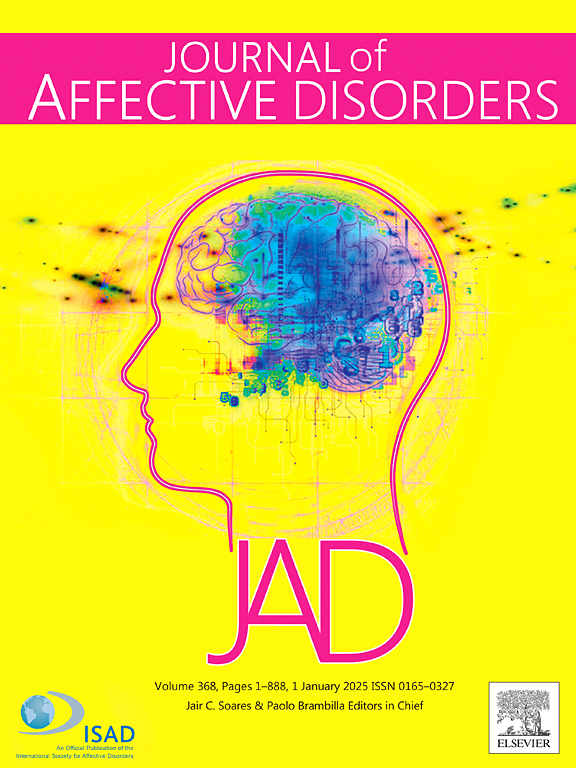Negative emotions among Chinese primary and middle school students and association with screen time: A network analysis
IF 4.9
2区 医学
Q1 CLINICAL NEUROLOGY
引用次数: 0
Abstract
Background
Psychological health is crucial for the physical and mental well-being of primary and secondary school students, however, the research on the interrelationships among negative emotions is still limited. This study aims to investigate the network structure of depression, anxiety, and stress, and explore their correlation with screen time in these populations.
Method
This study was conducted from March to July 2022 in 157 counties across 18 cities in Henan Province. The Depression Anxiety Stress Scale (DASS-21) was used to assess the negative emotions experienced by students. Firstly, “Expected Influence” and “Bridge Expected Influence” were considered as key indicators within the symptom network to depict the structure of depressive, anxiety and stress symptoms. Secondly. a case-dropping bootstrap procedure was applied to assess the stability of the network. Finally, this study identified the central and bridge symptoms in the network, and explored their relationships with screen time.
Results
The study included 52,782 students with an average age of 11.23±2.56 years. Network analysis showed that feelings of worthlessness, panic, and agitation are the predominant symptoms in the negative emotional networks. Depression, anxiety, and stress were interconnected through feelings of low mood, overreaction, and trembling. Additionally, lack of initiative and dry mouth exhibited the most significant direct associations with screen time.
Conclusion
The central and bridge symptoms identified in the negative emotion networks can serve as potential focal points for future research on negative emotions among primary and secondary school students.
中国中小学生的消极情绪及与屏幕时间的关系:网络分析
背景:心理健康对中小学生的身心健康至关重要,但对负面情绪之间相互关系的研究仍然有限。本研究旨在调查这些人群中抑郁、焦虑和压力的网络结构,并探讨它们与屏幕时间的相关性:本研究于 2022 年 3 月至 7 月在河南省 18 个地市的 157 个县进行。采用抑郁焦虑压力量表(DASS-21)评估学生的负面情绪。首先,将 "预期影响 "和 "桥接预期影响 "作为症状网络中的关键指标,以描述抑郁、焦虑和压力症状的结构。其次,本研究还采用了 "个案挖掘"(case-dropping bootstrap)程序来评估网络的稳定性。最后,本研究确定了网络中的中心症状和桥梁症状,并探讨了它们与屏幕时间的关系:研究共纳入 52782 名学生,平均年龄为(11.23±2.56)岁。网络分析显示,无价值感、恐慌和烦躁是负面情绪网络中的主要症状。抑郁、焦虑和压力通过情绪低落、反应过度和颤抖等感觉相互关联。此外,缺乏主动性和口干与屏幕时间的直接关联最为显著:结论:负面情绪网络中发现的中心症状和桥梁症状可作为未来研究中小学生负面情绪的潜在焦点。
本文章由计算机程序翻译,如有差异,请以英文原文为准。
求助全文
约1分钟内获得全文
求助全文
来源期刊

Journal of affective disorders
医学-精神病学
CiteScore
10.90
自引率
6.10%
发文量
1319
审稿时长
9.3 weeks
期刊介绍:
The Journal of Affective Disorders publishes papers concerned with affective disorders in the widest sense: depression, mania, mood spectrum, emotions and personality, anxiety and stress. It is interdisciplinary and aims to bring together different approaches for a diverse readership. Top quality papers will be accepted dealing with any aspect of affective disorders, including neuroimaging, cognitive neurosciences, genetics, molecular biology, experimental and clinical neurosciences, pharmacology, neuroimmunoendocrinology, intervention and treatment trials.
 求助内容:
求助内容: 应助结果提醒方式:
应助结果提醒方式:


